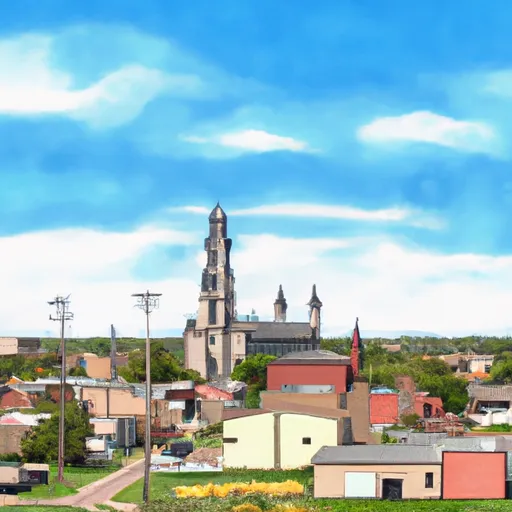°F
°F
mph
Windspeed
%
Humidity











Saint-Marys, Iowa is a charming small town located in Warren County, in the central part of the state. The town experiences a humid continental climate, characterized by hot and humid summers and cold winters. Average temperatures range from around 20°F (-6°C) in winter to 85°F (29°C) in summer, with precipitation spread throughout the year.
In terms of hydrology constituents, Saint-Marys is situated near the Middle River, which flows through the area. The river contributes to the town's natural beauty and supports various aquatic species.
Outdoor enthusiasts in Saint-Marys can enjoy a range of recreational activities. The Middle River offers opportunities for fishing, with species such as bass, catfish, and sunfish attracting anglers. The surrounding countryside provides ample space for hiking, biking, and birdwatching.
Additionally, near Saint-Marys is the Des Moines River, which offers additional opportunities for water-based activities like boating, kayaking, and canoeing. The surrounding landscapes provide stunning views and opportunities for wildlife observation.
Overall, with its favorable climate, proximity to rivers, and diverse outdoor recreation opportunities, Saint-Marys is an attractive destination for nature lovers and those seeking peaceful outdoor experiences.
Weather Forecast
Saint-Marys receives approximately 901mm of rain per year, with humidity levels near 82% and air temperatures averaging around 10°C. Saint-Marys has a plant hardyness factor of 5, meaning plants and agriculture in this region thrive during a short period during spring and early summer. Most plants will die off during the colder winter months.
Regional Streamflow Levels
100
Cubic Feet Per Second
63
Cubic Feet Per Second
205
Cubic Feet Per Second
14
Cubic Feet Per Second
Nearby Camping
| Camping Area | Reservations | Toilets | Showers |
|---|---|---|---|
| Sparrowfoot - Harry S. Truman Lake | |||
| Knob Noster State Park | |||
| Bray County Park | |||
| Bucksaw - Harry S. Truman Lake | |||
| Osceola RV Park | |||
| Windsor Crossing - Harry S Truman Lake |



